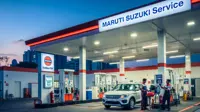Baker’s plan to enliven Alappuzha ignored
By James Paul | 26 Aug 2002
 Alappuzha,
Kerala:
The low-cost development plan, for reviving the fortunes
of Alappuzha town, which lays emphasis on optimum utilisation
of available resources, drafted by the noted architect Laurie
Baker, lies unnoticed even as the state government is approaching
funding agencies with mega projects.
Alappuzha,
Kerala:
The low-cost development plan, for reviving the fortunes
of Alappuzha town, which lays emphasis on optimum utilisation
of available resources, drafted by the noted architect Laurie
Baker, lies unnoticed even as the state government is approaching
funding agencies with mega projects.
The new development approach as delineated by Baker in his book Venice of The East: A Report written in 1999 lays emphasis on developing the tourism industry for taking Alappuzha back to its glorious days.
The report does not visualise execution of projects costing several crores of rupees. Instead, it harps on the wholehearted participation of the public in development processes for its success. After studying the present realities, the report finds that only the tourism industry has the potential to rejuvenate the town, which was a bustling trade centre once.
 According
to the report, in the present situation it is very difficult
to regain the earlier importance of the town as a seaport
and as a backwater ferryboat terminus. Lime production,
one of the main industries of Alappuzha once, does not
have a future because lime is rarely used in the construction
industry now, says the report.
According
to the report, in the present situation it is very difficult
to regain the earlier importance of the town as a seaport
and as a backwater ferryboat terminus. Lime production,
one of the main industries of Alappuzha once, does not
have a future because lime is rarely used in the construction
industry now, says the report.
It also observes that it is unlikely that Alappuzha would re-emerge as the main centre of the coir industry. The report recommends against starting any big industry in the town as it would increase pollution and would make life hazardous for the residents. At the same time, the potential of the town to develop as a centre of tourism is enormous, says Baker. “First and foremost, Alappuzha has sun, sand and the sea, which would satisfy an average tourist.”
Pointing out the riches of Alappuzha, Baker observes that the famous and still beautiful canals, the distinctive old buildings by the side of it and a rich crop of ancient mosques churches and temples are all unique to Alappuzha. “The fine beautiful rain trees and the comparatively quiet surroundings will endear the town to tourists,” he says.
 Comparing
Alappuzha with Venice, Italy, Baker finds that both have
many common features. “Both the towns have a network
of canals, distinctive country boats, old buildings and
small shops by the side of canals. But heaps of garbage
by the side of canals, dirt and human excreta polluting
the water of canals, unhygienic shacks serving tea and
snacks are all peculiar to Alappuzha.”
Comparing
Alappuzha with Venice, Italy, Baker finds that both have
many common features. “Both the towns have a network
of canals, distinctive country boats, old buildings and
small shops by the side of canals. But heaps of garbage
by the side of canals, dirt and human excreta polluting
the water of canals, unhygienic shacks serving tea and
snacks are all peculiar to Alappuzha.”
Filth repels tourists and priority should be given to keep the canals and its sides clean if the town has to attract tourists, he says. “Shacks should be replaced with Kerala-style clean kiosks with umbrellas and seats overlooking the waters.”
Referring to the old buildings, he warns that construction of modern structures totally out of character with the Alappuzha style should not be allowed. Baker finds that Alappuzha had plenty of interesting history and historical monuments, including places of worship of various communities, and beautifully kept old tombs. He wants all posters pasted on buildings to be removed.
A Kerala-style structure should be formed to affix posters, he says. “For the purpose of removing waste, bicycles fitted with storage bins should be used.” He recommends the construction of water storage towers at various parts of the town from where tourists can drink pure drinking water.
Kerala-style kiosks selling tender coconuts should also be built, he says. “The kiosks should sell snacks and local fruits to tourists.” Lamenting at the lack of reliable information for tourists, Baker suggests opening up of information booths at all places where tourists gather.
“But there should be only one centre at one place and the information provided should be correct,” he says. “They should be able to provide correct answers to the questions normally asked by tourists.”
Up-to-date timetables should be made available there, he says. Baker, in his report, is vocal against the construction of a sports stadium in the town and a permanent pavilion at the finishing point of Nehru Trophy Boat Race. “Big stadiums are white elephants.” Baker says he is against the creation of water sports facilities on Punnamada Lake.




















